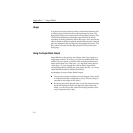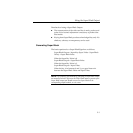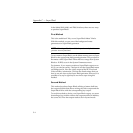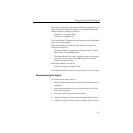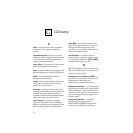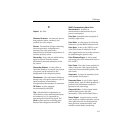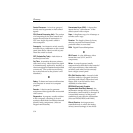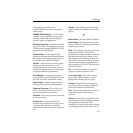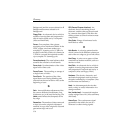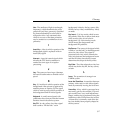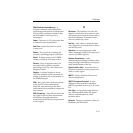
Glossary
G-4
Control Processor: A circuit or group of
circuits used to generate or alter control
signals.
CPU (Central Processing Unit): The section
of a computing device that controls and
causes the execution of instructions. A
CPU on a single chip and is called a
microcomputer.
Crosspoint: An electronic switch, usually
controlled by a pushbutton on the control
panel, that allows video or audio to pass
when the switch is closed.
CRT (Cathode Ray Tube): A television or
terminal picture tube.
Cut, Take: A transition between primary
video and/or key video where one signal
is instantaneously replaced by another, or
where one signal is instantaneously added
or removed. (The switch occurs during
the vertical interval so the picture is not
disturbed.)
D
Debug: To detect and correct malfunctions
of a computer or errors in a computer
program.
Decoder: A device used to generate
component video signals from an encoded
video source.
Diagnostics: A program, usually resident
in the computer, consisting of several
routines which check for malfunctions and
identify faulty components. (Also see
Program and Routine.)
Downstream Keyer (DSK): A keyer that
inserts the key “downstream” of the
effects system video output.
Dupe: A duplicate copy of a videotape, or
to make such a copy.
Duration: The length of time (in hours,
minutes, seconds and frames) that a
particular effect or event lasts.
DPM: Digital Picture Manipulator.
E
EBU Format: A color difference video
format that uses Y, R-Y, and B-Y
components.
Editor: A control system (usually
computerized) which allows the control of
video tape machines, video and audio
switchers, and other devices remotely
from a single control panel.
EDL (Edit Decision List): A record of edit
decisions made for a program (in-times,
out-times, and effects). Often saved on a
floppy disk, it can be used for Auto
Assembly at a later time.
EEPROM (Electrically Erasable
Programmable Read Only Memory): An
information storage device on which the
information cannot readily be changed. It
is nonvolatile memory in that power
conditions do not effect the information.
(Also see PROM, ROM, and RAM.)
Effects Dissolve: A microprocessor-
controlled mode in which the analog
values (control settings) of one effects



